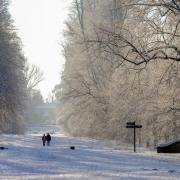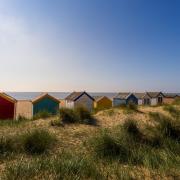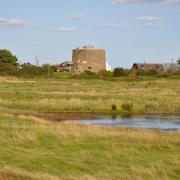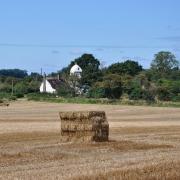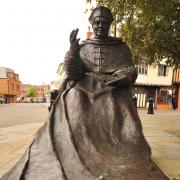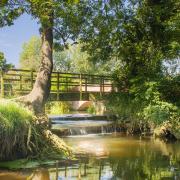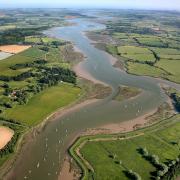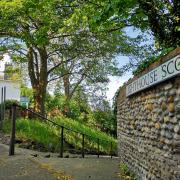Lindsay Want steps back into Roman times to explore the Suffolk countryside near Saxmundham

There are two sides to every Suffolk village – the one you see from the main road, and the one you discover when you stop and wander a while. Whizz along the A14 as it cuts Baylham from Coddenham near Needham Market and the site of Suffolk’s largest Roman settlement, Combretovium, will stay forever a secret behind the trees. Swing round by Hoxne’s medieval church, hell-bent only on joining the Roman road north towards Norwich and the ups-and-downs of a village which both witnessed King Edmund’s murder and brought a precious hoard of Roman silver to light, will remain a dark mystery.
But taking time out to explore is always a bit of a toss-up. Even armed with general directions from a trusty walks leaflet, things can go either way. The thing is, not all in-roads to the past are as straightforward as good old Roman Stone Street between Halesworth and Bungay. Concocting connections yourself and making your own discoveries along the footpath or bridleway are all part of the fun.
A head of the game

Rendham near Saxmundham is one of those en-route sort of places, where history stares you straight in the face. Right on the B1119 bend by the quaint White Horse, mighty St Michael’s and just a few doors down from Maggi Hambling’s two-tone Bentley, a rather refined Roman figurehead oversees village proceedings from the smartly painted sign forged in AD 2000. What better reason to bring your chariot to a halt in the village hall car park, muster your troops and set out to reconnoitre the local terrain?
A quick sortie through the churchyard and careful bit of road-crossing later, closer inspection of the head reveals a remarkable resemblance to Derek Jacobi. Quite why it is severed or super-imposed on a river scene remains a mystery, but the likeness to the famous actor is enough to conclude that, aye, it must be Claudius and
the cohort gets its marching orders along Bruisyard Road.

An unexpectedly regimented approach
Right turn, and Chapel Lane confirms by its very name how the impressive, square brick building dated 1750 was once a dissenters’ ‘preaching box’. Further uphill, little thatched cottages and fine halls peer over the brow and reflect on ponds full of reed mace where the greenest meadow-pasture mosaic falls away towards St Michael’s 14th century flint tower. Cut left along footpaths through the copse and the landscape rises in a rigidly regimented fashion as arable fields fall obediently into line. Time to parade past the longest rows of hedges, up the axis of a vast grid of fields, crossing from square to square via sleeper bridges – a route march to remember across the heavy clay soil and one which could indeed cause a rebellion when rewarded only by reaching the road at the top of Pipney Hill.
Further along by the T-junction a tunnel-of-a-leafy-lane leads past time-honoured trees to exciting promises of villas. But before you can say ‘All roads lead to Saxmundham’, the footpath takes a dexterous turn back towards Rendham village.
Guardians of the past
Cross the sleeper bridge portal. Sally forth along the field margin and just one meadow up from the main road, a strapping great continental pine, stands akimbo like some fearsome gladiator guarding another bridge before Rendham Barns Farm. What lies within is another mystery – tens of vintage oaks rubbing shoulders with each other, set to shield the land against the hot pursuit of summer with an interlocking canopy, a living ‘testudo’ (tortoise). It’s a sight worthy of the ancient deer park at Staveton Thicks near Wantisden. Beyond the ivy-wreathed hollow oaks, there’s a secret pond-side turn as parkland and path open out unexpectedly into a large ride, rolling with views. The world then winds down to the deepest gully stream, leaving the landscape to rise up from the steep, silty banks above. Back with civilisation, the tarmac-covered Sandy Lane confirms the geological shift – a far cry from the thick clay clods encountered on Pipney Hill. Here lovingly managed meadowscapes dotted with black sheep tumble down towards the church in what innately feels like a meaningful gesture to safeguard these soothingly Suffolk views for time immemorial. A few steps to the tiny village green known as the Knoll and Chapel Lane leads back towards St Michael’s. Unbeknown to passers-by, Claudius sits quietly inside. You’ll find him behind the back pews in the history corner, waiting to share his story.










